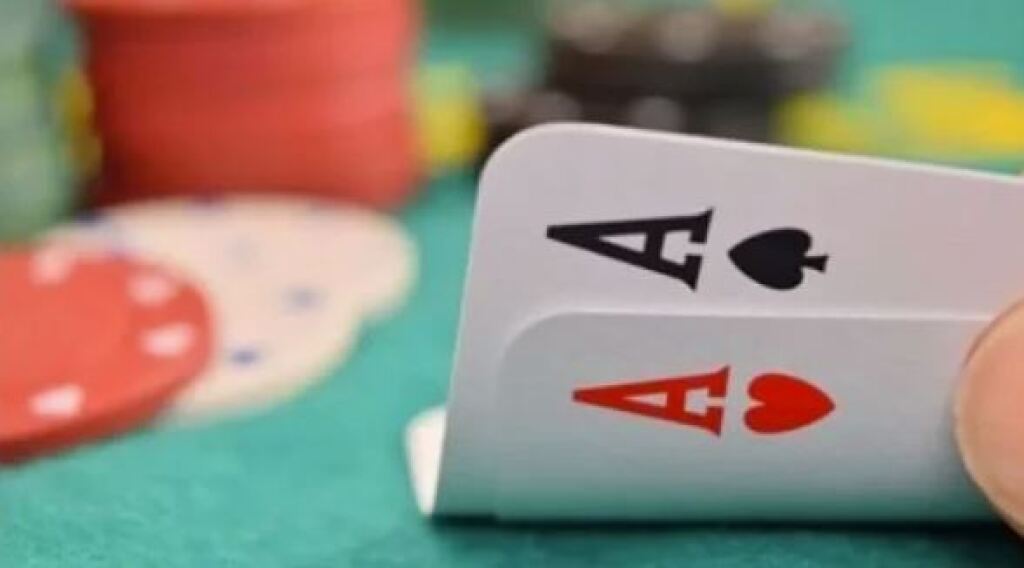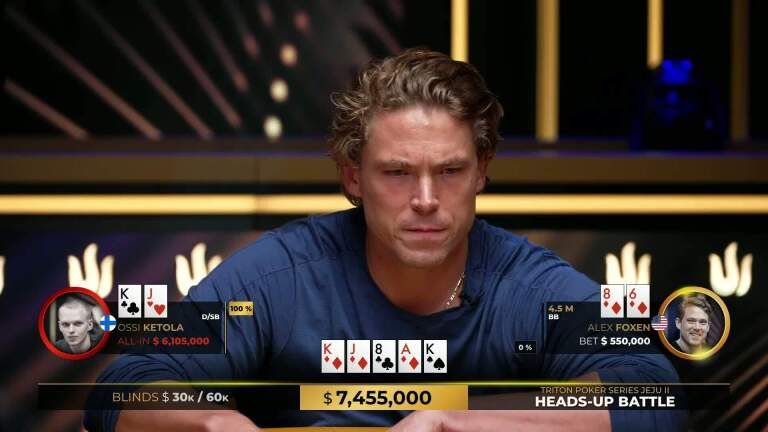As discussed in the previous article, the best feeling in No Limit Hold 'em is to get dealt pocket AA. Your blood pressure rises, and you already imagine what you'd spend the buy-in you are about to win. You don't realise that although you are a significant favourite in a preflop all-in situation, that spot is a rare guest. You need to learn how to play preflop and postflop correctly by understanding the concept of relative hand strength, and instead of focusing on your hand, think about range versus range. In this article, we'll continue with four possible ways to ruin the EV of pocket AA.
Betsize tell preflop
Adjusting your preflop sizes exploitatively to recreationals is a thing, and you shouldn't disregard this option. However, many inexperienced players approach it incorrectly, ignoring the setting or using a linear way (the better their hand, the bigger they open) to bet.
Your bet sizes need to be coherent, meaning that if you plan to increase your open sizes as an exploit, you should do it with a range of hands, not only with aces. If you fail to do this, it will be straightforward for other players at the table to exploit you, either folding more often preflop or stacking you postflop when they're ahead, and they know it because of your size tell.
A viable approach is gradually increasing your open size according to the recreational players' VPIP. So the higher that number is, the bigger you open. Be careful, though, and consider factors like position, stack depth and player type. OOP you'll have less control of the pot, therefore you need to be more selective. In a shallow stack depth situation, you might not need to increase your bet sizes, as the SPR postflop will stay favourable to play for all of your opponents' chips. When you face an aggressive opponent, you might want to give them rope and room for bluffing. They'll probably notice and approach the spot more carefully if you go too big. On the contrary, if you face a stationary opponent, you want to pile the money in yourself.
Range thinking
If you consume any material of poker education, I'm sure you've already heard to think about ranges. As a beginner, it's pretty challenging to do so. Therefore, I suggest practising how you would construct a betting range in a certain spot outside the tables.
I'll give you an example for better understanding. Let's say you open ♦️A♠️A from UTG to 2bb and the BTN cold calls. Flop comes ♥️5♥️6♦️8, and you are at the decision point if you want to bet or check, and if you bet, how big would it be? You need to zoom out and see the situation as a whole. What are the ranges here arriving at the flop, and what does it imply as an overall strategy for you?
This board is excellent for the cold calling range and terrible for the opener. Even though you opened from UTG, which is a relatively tight range, you'll have all kinds of broadway hands, Axs, etc., that completely missed this flop. Moreover, your overpair advantage is devalued by the possible sets and two-pairs. You could argue that you have most of those hands, too. Even though, the problem is that it's a small portion of your range, while it's a significant portion of the BTN cold call range, which at the same time lacks (or at least has less) of those hands that missed, like off-suit broadways, Axs, etc.
So, the conclusion is that your range is highly incentivized to check. Actually, GTO suggests checking our entire range in an unfavourable situation like this. That's why it's problematic when you only look at your aces and come up with reasons such as "I need to protect my hand", "I want to charge the draws", etc. "therefore, I bet big on the flop".
This is probably the most extreme example, but there are many other spots where you need to protect your checking range, and it's very often a good idea to choose pocket AA to do so. Compared to any other hand, there won't be new top pairs on later streets, which ruin most of the EV of other hands. Search for these spots and learn to add AA to that checking range when necessary.
The concept of relative hand strength
Last but not least, let's discuss relative hand strength—a common mistake by recreationals and inexperienced low-stakes players to misunderstand the strength of their hands. Pocket aces were good hands preflop; you would go for all the money if possible. Although reaching the river and a betting sequence, those aces might be far behind. Still, some players can't accept or don't notice this.
Think of this typical example:
You open 2,2bb from the CO with ♠️A♥️A and only the BB calls. The flop comes ♠️J♠️T♦️2, and you apply a big bet (somewhat polar) strategy for ¾ pot. The BB decides to check-raise you big, and there is nothing else to do but call for you. The turn card is the ♠️2, and BB continues firing with ¾ pot. There is still room for improvement for your hand; it's unlikely your opponent is betting a worse hand for value, so we're also hoping she'll find some bluffs. The river is the ♥️9, and Villain goes all-in; now it's your turn. It was an absolutely terrible runout to call down, although, in equilibrium, your hand might sometimes call to avoid running over. Sometimes, I hear students saying things like: "but Villain could have bluffs here". But in reality, against actual human beings, do you really think that they'll ever find nearly enough bluffs? If they do so, what would be their best candidates to do so? That's right, the ace of spades. A card that we are currently holding, thus blocking massively the bluffing range,
Your hand decreased in value; even with a low flush, I wouldn't be happy against an average small-stakes regular here. It's crucial to understand the concept of relative hand strength. On the flop before any betting, sets are the strongest hands JJ, TT, 22, then come the two pairs (realistically here JTs, JTo), then the overpairs like (AA-QQ), then the top pairs, etc. So our hand is 9th best on the flop, which is pretty good. The action sequence filters both ranges, and by the river, there are possible quads, boats, flushes, and straights out there. Try to count how low your two-pair of AA and 22 got in the hand ranking! Probably not even in the top 100. Shocking, right? That's how you should approach relative hand strength and play your holdings accordingly.
Summary
You can widen this understanding to other spots, too. Other hands won't take the same role as aces, but these concepts are keystones of understanding the game of poker. When you try to exploit, you also open yourself up to exploitation. If you do it very obviously, like using preflop betsizes according to hand strength, you'll lose EV in the long run. Familiarize yourself with range thinking and evaluate your hand according to relative hand strength. When your entire range is incentivized to do one certain thing, you cannot go against it just because you're dealt aces. An excellent way to protect your checking ranges is to include strong, less vulnerable hands in your game, like aces, when necessary. If you understand that some runouts are unfavourable, it'll be easier to let go of seemingly strong holdings at times.
That's all for now, guys; stay tuned for more tips about starting hands!


















0 comments